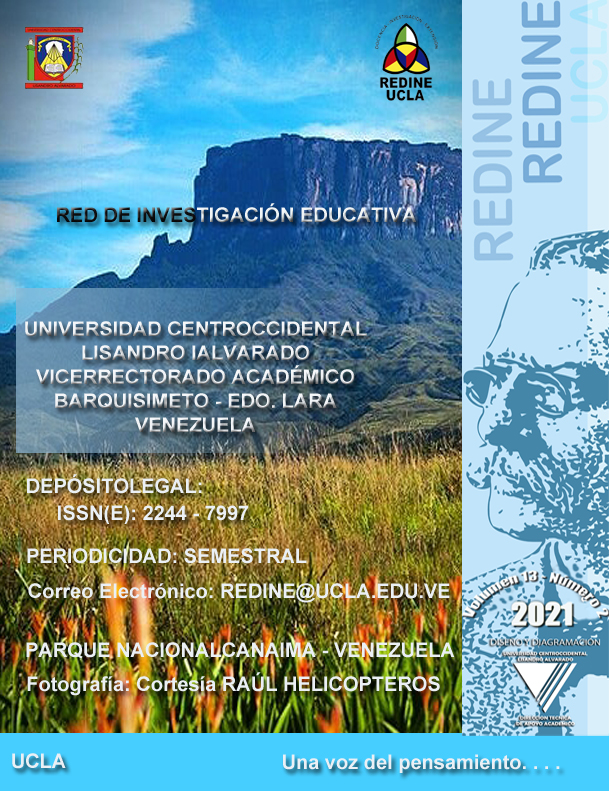the game: creative mediation action. the culture of peace in the classroom
Keywords:
Game, Creativity, Mediation, Education, Culture of PeaceAbstract
The game is a representation, on many occasions, of who we are. It not only transmits values, but also social and cultural roots of those who practice it. Part of an anthropological vision, of the various playful actions that take place in it. It is important that its promoters: educator, counselor, mediator, discover the human capacities of those who interact by playing. For this reason, the present intervention proposal aims to incorporate the Game as a Creative Action to the teaching practice, who, in their role, is trained as a mediator of processes, applies skills and abilities, with innovative material, for the prevention and resolution of conflicts, improving the coexistence of all the actors of the educational fact, promoting a Culture of Peace. The Creative Strategy In-network-ados is proposed, a game methodology to carry out and turn it into a foundation of knowledge construction processes through training. Theories that support the proposal: De la Torre. (2006), from Creativity, talks about the integration of the game as an educational and formative process, under the pedagogical perspectives applicable to recreational activities. Another element is the Comprehensive Approach to Decision Making proposed by Álvarez, (2004), widely applied in Educational Guidance where situations are generated that promote results that promote the Culture of Peace through Play, to create and agree on rules of coexistence, development of negotiation skills for any circumstance. Constitutive elements are addressed for their applicability, in an environment that promotes the principle of possibility and the principle of freedom.
Downloads
References
Álvarez M, Obiols S, Meritxell (2004). El proceso de toma de decisiones profesionales a través del coaching.Electronic Journal of Research in Educational Psychology, vol. 7, núm. 2,
septiembre, 2009, pp. 877-900. Universidad de Almería, Almeria, España.
Amabile, T. M., (1983). The social psychology of creativity: A componential conceptualization. Journal of Personality and Social Psychology, 45, 357-376. Disponible en:
https://creatividadinnovacion.wordpress.com/2012/
/10/modelo-de-componentes-de-amabile/ [Consulta:
Agosto, 15, 2020]
Bruner, J. (1984). Acción, Pensamiento y Lenguaje. 2da Edición, Alianza, España
De la Torre, S, (2006). Comprender y Evaluar la Creatividad. Un recurso para mejorar la enseñanza. Editorial Aljive. Málaga, España.
Programa para las Naciones Unidas para el Desarrollo, (2002). Las tecnologías de la Información y la Comunicación al Servicio del Desarrollo. 1era edición. Venezuela. Disponible en:
http://hdr.undp.org/sites/default/files/venezuela_
_es.pdf. [Consulta: Agosto, 15, 2020]
Lorente, Ripoll y otros, (2007). Manual de Juegos. Editorial OCEANO. España.
Marín, G. (S/F). Teoría Sobre Creatividad. Estrategias Creativas. Grupo Pintura. By – Nc – Sa.
Published
How to Cite
Issue
Section

This work is licensed under a Creative Commons Attribution-NonCommercial-ShareAlike 4.0 International License.
Derechos del/de autor/es a partir del año de publicación
Esta obra está bajo la licencia:
Creative Commons Reconocimiento-NoComercial-CompartirIgual 4.0 Internacional (CC BY-NC-SA 4.0)
Las opiniones expresadas por los autores no necesariamente reflejan la postura del editor de la publicación ni de la UCLA. Se autoriza la reproducción total o parcial de los textos aquí publicados, siempre y cuando se cite la fuente completa y la dirección electrónica de esta revista. Los autores(as) tienen el derecho de utilizar sus artículos para cualquier propósito siempre y cuando se realice sin fines de lucro. Los autores(as) pueden publicar en internet o cualquier otro medio la versión final aprobada de su trabajo, luego que esta ha sido publicada en esta revista.




